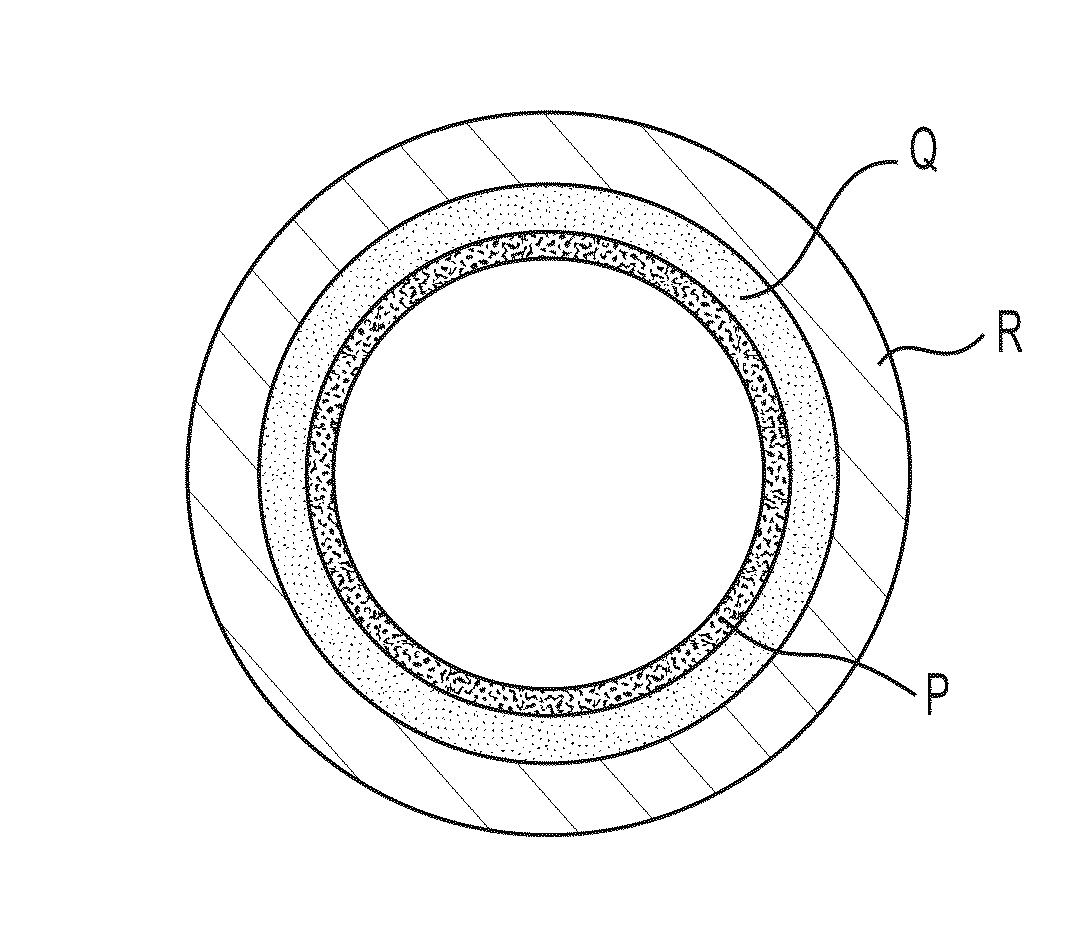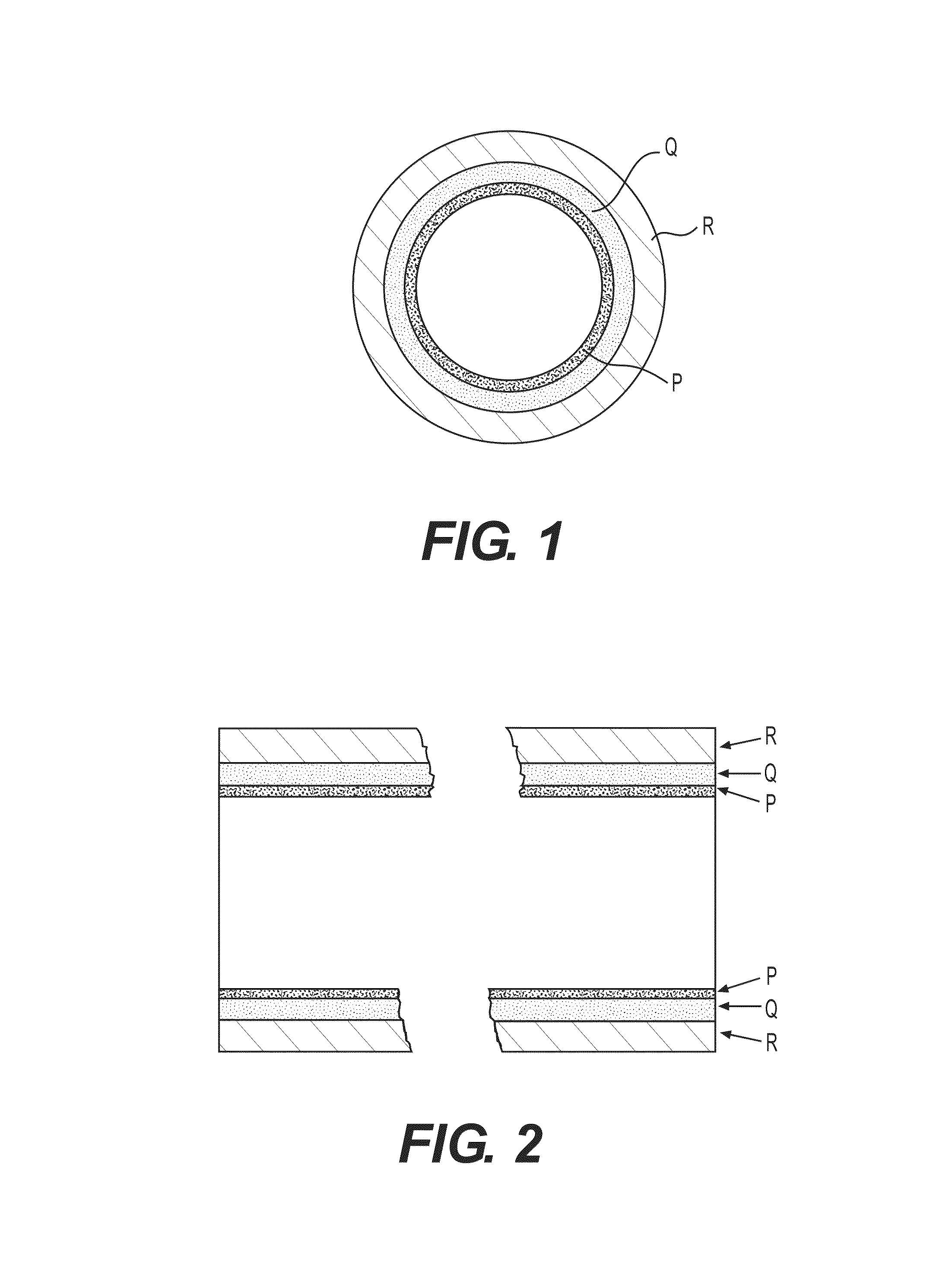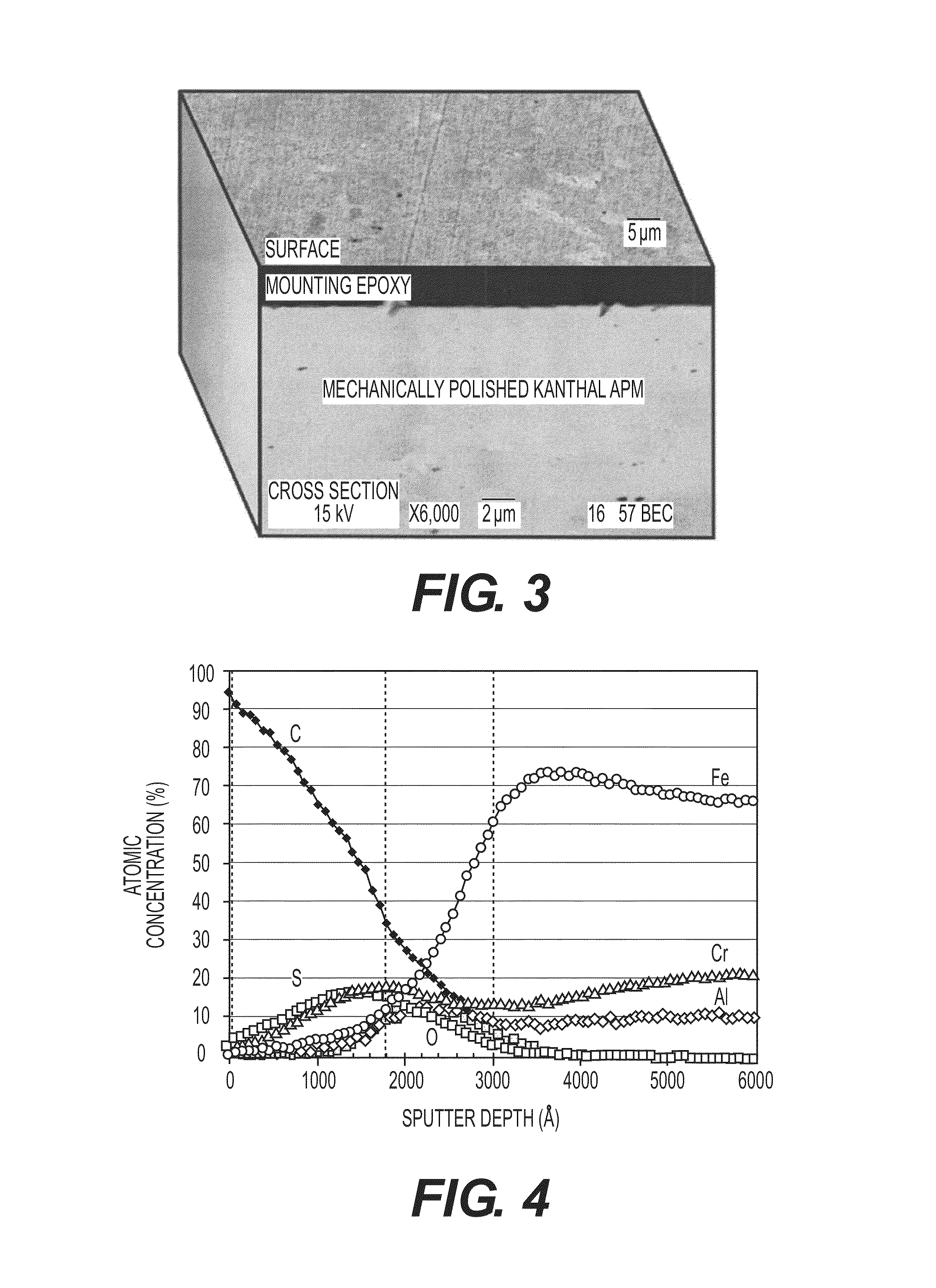High performance coatings and surfaces to mitigate corrosion and fouling in fired heater tubes
a technology of high-performance coatings and surfaces, applied in surface reaction electrolytic coatings, magnetic recording, record information storage, etc., can solve the problems of limiting the residence time, coke formation and accumulation on the visbreaker wall, and reducing the heating efficiency of the heater, so as to reduce the formation of coke suppress the formation of fouling, and reduce the effect of carburization and sulfidation and other forms of high temperature corrosion
- Summary
- Abstract
- Description
- Claims
- Application Information
AI Technical Summary
Benefits of technology
Problems solved by technology
Method used
Image
Examples
example 1
[0053]Following the test methods described above, a mechanically polished Kanthal APM sample was tested. FIG. 3 depicts surface and cross-sectional SEM images of the corrosion surface of a mechanically polished Kanthal APM after reaction at 1000° F. (538° C.) in heavy resid-content crude for 4 hours. No significant corrosion or fouling deposits were observed after the specimen was cleaned in toluene and acetone sequentially. FIG. 4 depicts AES concentration depth profile of the corrosion surface of the same sample. The carbon peak found near the surface was probably caused by remnants of crude deposits. Also identified was about 200 nm thick corrosion scale, which was mainly comprised of Cr—Fe sulfide and Cr—Al oxide. Under this layer, about 200 nm thick alumina sublayer formation was observed. This alumina layer provides superior corrosion resistance of the coating metal, which is prerequisite for fouling mitigation.
example 2
[0054]Following the test methods described above, a 120 grit finished Kanthal APM sample was tested. FIG. 5 depicts surface and cross-sectional SEM images of the corrosion surface of a 120 grit finished Kanthal APM after reaction at 1000° F. (538° C.) in heavy resid-content crude for 4 hours. After cleaned the specimen in in toluene and acetone sequentially, no significant corrosion scale was observed. However, some thin layer of carbon deposit was observed on the surface, whose deposit appeared to be anchored to the roughened surface of the metal. Superior corrosion resistance was attributed to alumina layer formed on the metal surface. The thickness of alumina layer was about 200 nm measured by AES.
[0055]The cross-section SEM images illustrated in FIGS. 3 and 5 illustrate the effect of surface roughness in reduction of carbon deposit. Two samples were tested and cleaned at the same experimental conditions. The thickness of the carbon deposit on the rough surface (e.g. 120 grit fin...
example 3
Comparative Example
[0056]Following the test methods described above, a 120 grit finished 304L SS sample was tested. FIG. 6 depicts surface and cross-sectional SEM images of the corrosion surface of a 120 grit finished 304L SS after reaction at 1000° F. (538° C.) in heavy resid-content crude for 4 hours. Formation of thick (about 8μ) multi-layered corrosion scale was observed. Corrosion scales were comprised of Fe sulfide, Fe—Cr sulfide, thiospinel and Fe—Cr oxysulfide based on Energy Dispersive X-ray Spectroscopy (EDXS) characterization. In comparison with the same surface finished Kanthal APM (Example 2), the thickness of corrosion scale on 304L SS was about 40 times thicker (8000 nm vs. 200 nm). This result clearly confirms that the alumina layer formed on Knathal APM surface is much more resistant to corrosion than the corrosion scales formed on 304L SS surface.
PUM
| Property | Measurement | Unit |
|---|---|---|
| thickness | aaaaa | aaaaa |
| thickness | aaaaa | aaaaa |
| thickness | aaaaa | aaaaa |
Abstract
Description
Claims
Application Information
 Login to View More
Login to View More - R&D
- Intellectual Property
- Life Sciences
- Materials
- Tech Scout
- Unparalleled Data Quality
- Higher Quality Content
- 60% Fewer Hallucinations
Browse by: Latest US Patents, China's latest patents, Technical Efficacy Thesaurus, Application Domain, Technology Topic, Popular Technical Reports.
© 2025 PatSnap. All rights reserved.Legal|Privacy policy|Modern Slavery Act Transparency Statement|Sitemap|About US| Contact US: help@patsnap.com



